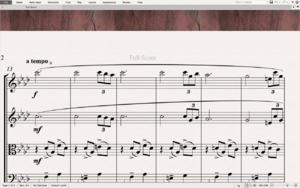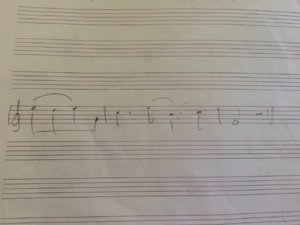sIR dORT
Senior Member
I had to arrange a piano piece for a string quartet, and had a question for you guys. Is the long slur to indicate one phrase/musical idea in violin 1 and 2 correct, or should it be smaller slurs so that it doesn't look like I want one big bow? I obviously don't and I know it wouldn't be played like that, but I want to make sure that a violinist reading this (that ain't gonna happen, just theoretically) would see that as one musical phrase/idea.






 ).
).

